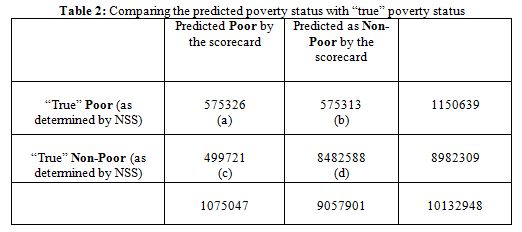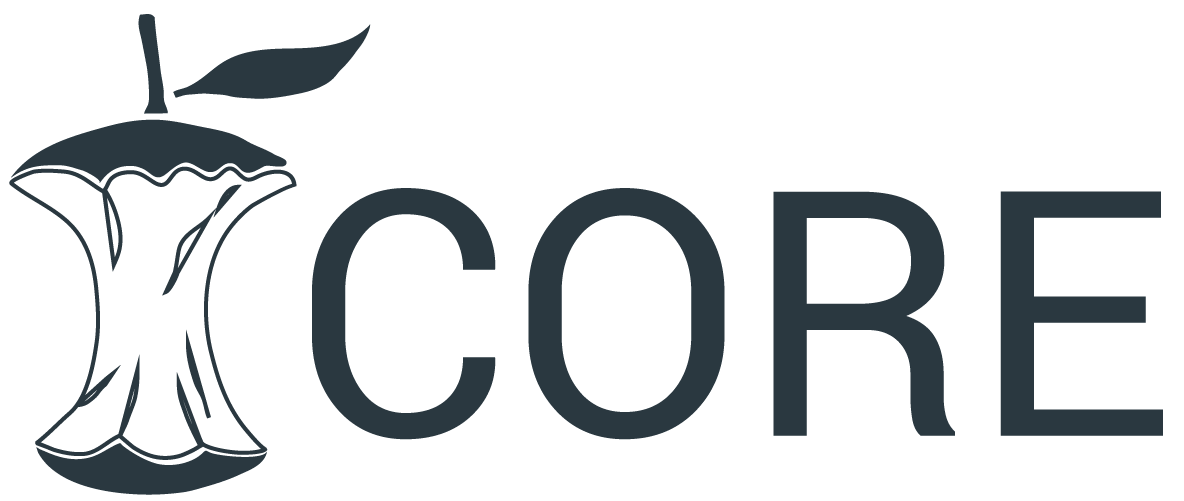Developing a Poverty Measurement Scorecard: Predicting MPCE for Microfinance Clients in Urban Delhi
DOI:
https://doi.org/10.5281/zenodo.13340543Keywords:
poverty measurement tool (pmt), scorecard development, microfinance institutions (mfi), predictive accuracy, consumption expenditure (mpce)Abstract
A scorecard is a poverty measurement tool (PMT) that helps microfinance institutions (MFI) to measure and track the poverty status of their clients. It uses some verifiable indicators from the national expenditure survey, to get a score that is highly correlated with poverty. In the present study, an attempt has been made to develop a scorecard using the stepwise OLS regression method, to predict the MPCE of MFI’s clients. The NSS 68th round (2011-12) data on consumption expenditure for urban Delhi has been used for this purpose. The predictive accuracy of the regression model (scorecard) is assessed by comparing the poverty status predicted by our scorecard with the “true” poverty status as established by the NSSO data. The “Total Accuracy” criterion is used which identified 89.39% of the respondents correctly. Thus, the scorecard appears to be a fairly accurate tool for assessing the poverty status of MFI’s clients.
Downloads
References
Adjei, J. K., & Arun, T. (2009). Microfinance programmes and the poor: whom are they reaching? Evidence from Ghana. Brooks World Poverty Institute Working Paper Series, 7209, 265-291.
Alkire, S., & Santos, M. E. (2010). Acute multidimensional poverty: A new index for developing countries. United Nations Development Programme Human Development Report Office Background Paper.
Ford Foundation and CGAP. (2010). Poverty targeting and measurement tools in microfinance, Progress out of Poverty Index and the Poverty Assessment Tool.
Goodman, L. A., & Kruskal, W. H. (1979). Measures of association for cross classifications. In measures of association for cross classifications, pp. 2-34. New York: Springer.
India Development Foundation (IDF). (February 2011). Counting the (net) number of people who crossed (from below) the USD 1.25 a day consumption threshold in India between 1990 and 2010.
IRIS Centre (2005). Note on Assessment and Improvement of Tool Accuracy, Available at: http://www.povertytools.org/other_documents/AssessingImproving_Accuracy.pdf.
IRIS Centre. (2007). Client Assessment Survey—India. Available at: http://www.povertytools.org/USAID_documents/Tools/Current_Tools/USAI. D_PAT_India_8-2007.xls, accessed July 7, 2008.
IRIS Centre (2010). Accuracy Results for 26 Poverty Assessment Tool Countries, Available at: http://www.povertytools.org/other_documents/Accuracy%20Notes/PAT_26_country_accuracy_result s_Jan2010.pdf.
Planning Commission. (2011). Report of the working group on urban poverty, slums, and service delivery system. New Delhi: Government of India.
Schreiner, M. (2008). A simple poverty scorecard for India. Available http://www.microfinance.com/English/Papers/Scoring_Poverty_India.pdf.

Downloads
Published
How to Cite
Issue
Section
License
Copyright (c) 2024 Dr. Vandana Sethi

This work is licensed under a Creative Commons Attribution 4.0 International License.
Research Articles in 'Management Journal for Advanced Research' are Open Access articles published under the Creative Commons CC BY License Creative Commons Attribution 4.0 International License http://creativecommons.org/licenses/by/4.0/. This license allows you to share – copy and redistribute the material in any medium or format. Adapt – remix, transform, and build upon the material for any purpose, even commercially.









